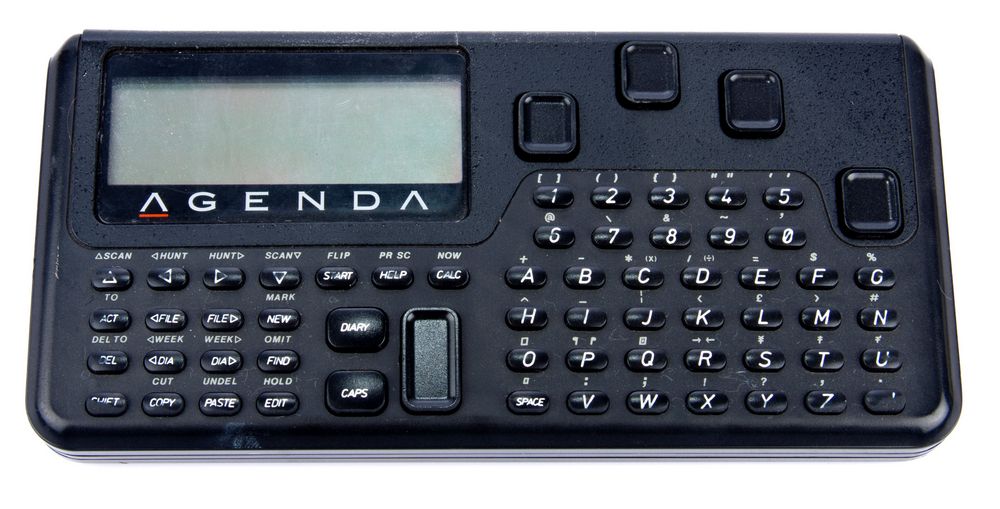
The Microwriter is a hand-held portable word-processor with a chorded keyboard. It was sold in the early 1980s by Microwriter Ltd, of London, UK. Microwriter was invented by UK-based, US-born film director Cy Endfield.
[h="2"] The Microwriter MW4 [/h]
The 23 cm x 12 cm x 5 cm device comprises:
- A six-button chording keyboard.
- A single line LCD display.
- An 8 bit microprocessor.
- A very basic Word processing program in an 8kb EPROM.
- 16 kb of RAM.
- Rechargeable Nickel-cadmium batteries - sufficient to run the device for 30 hours.
- Various interfaces (see below).
[h="3"] Keyboard [/h]
The keyboard uses one button for each finger and two for the thumb of the user's right hand. The five buttons immediately beneath the fingers are pressed in different combinations to generate all letters.<ref name="Bellaire codes" >{{cite web
|url=http://www.bellaire.demon.co.uk/bellaire_cykey_codes.html
|title=MicroWriter Codes
|publisher=Bellaire
}}</ref> The second thumb button is used to toggle through a range of modes that allow the user to switch case, enter numbers, insert punctuation and even add [wiki]ASCII[/wiki] control characters, to be used in editing the document being prepared. To type a letter "T", for example, the user would tap the top thumb button to shift to uppercase, then chord a "t" by pressing the index finger and ring finger buttons simultaneously.
The manufacturers claimed that most people could learn to use it in just a couple of hours. With some practice, it is possible to become a faster typist with the Microwriter than with a conventional keyboard, providing that what is being entered is just text. Typing is slowed if a substantial number of special characters have to be entered using the "shifting" mechanism.
Learning the chords for the basic letters and numbers is facilitated by a set of flash-cards that show simple mnemonics for each character.
[h="3"] External ports [/h]
At the top end of the unit is a 25 pin D-type connector providing an RS-232 port, an interface to an audio cassette player for saving and restoring files and a small white on/off button. At the other end is the connector for the battery charger and a 37 pin D-type connector that can be hooked up to an optional external unit to allow the Microwriter to be connected to a television and thus to perform full-screen editing. The serial port can be used to connect the Microwriter directly to a printer, or to allow it to be plugged into a computer to function in place of the conventional keyboard.
[h="3"] Reception [/h]
Despite a lack of similar products, the Microwriter was not a success, and ceased production in 1985. It is likely that the concept of a chording keyboard put off many potential customers.
[h="2"]External Links:[/h]
[wiki]Category:Systems[/wiki]
